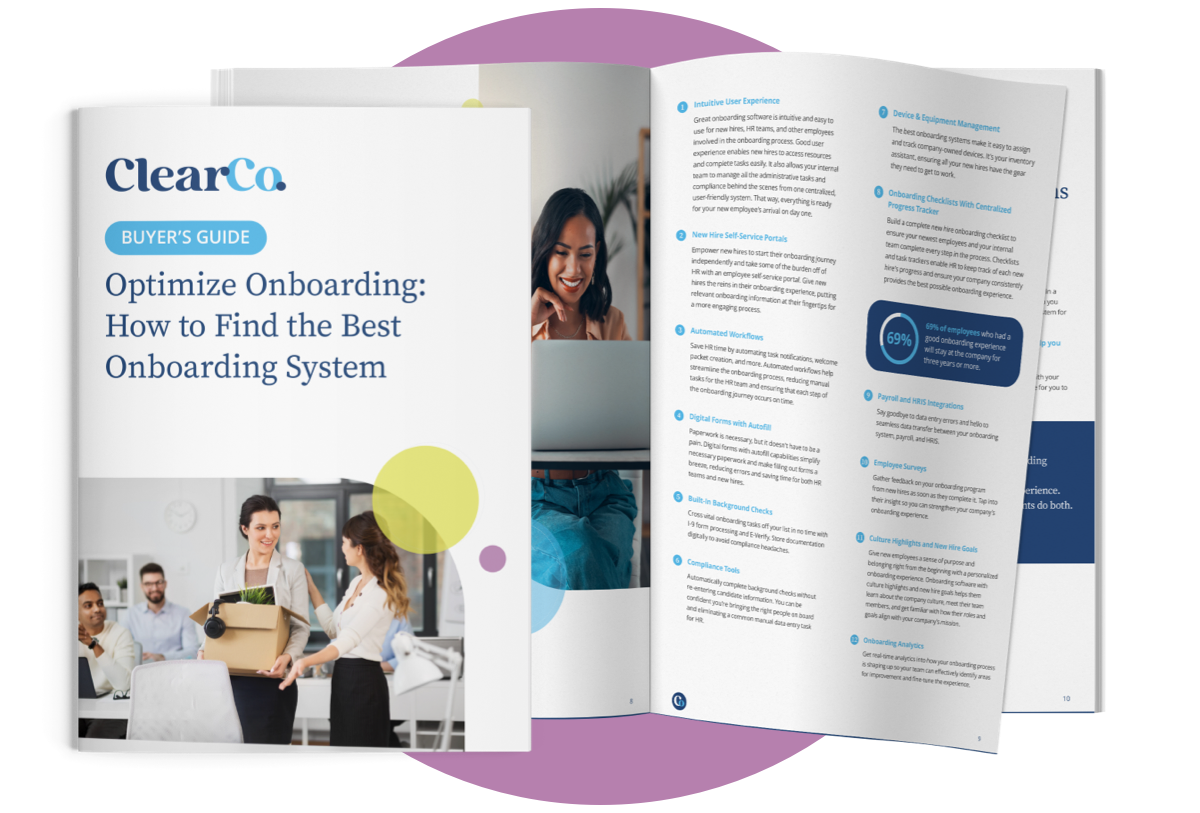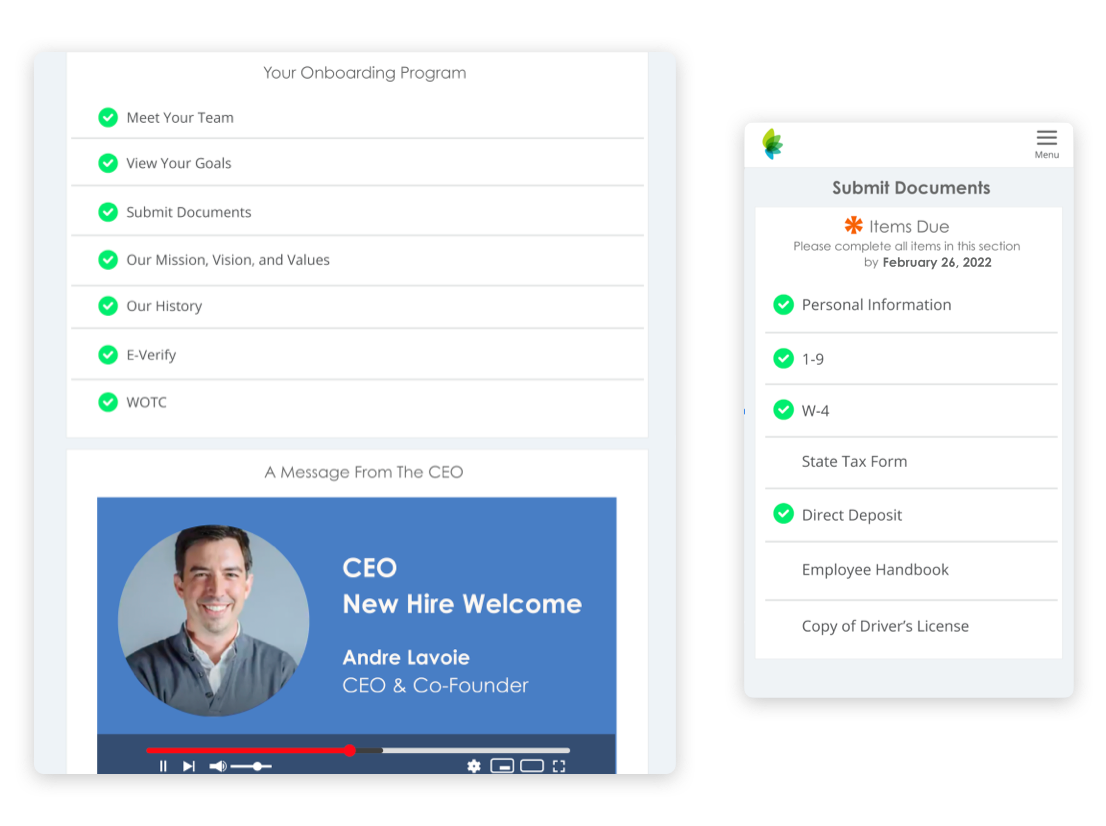This article on ways to create a better employee onboarding process was originally published in December 2015. It was updated with new information in April 2022.
There’s a lot to consider with the employee onboarding process. You want new employees to feel comfortable and valued in their new work environment. They need to meet their colleagues and start forming connections. They also need to complete administrative tasks, set up equipment, and get familiar with their responsibilities.
That’s why it’s so important for employers to take onboarding procedures seriously. It sets the tone for new employees and helps them start their new job with confidence. If you want to ensure you’re doing everything you can to help out new hires, check out these four measures you can take to better your employee onboarding process.
Don’t risk losing brand-new employees over a bad #onboarding experience. Find out 4 actions you can take to build an onboarding process that contributes to long-term retention:Go Paperless
New hires usually have a hefty pile of paperwork to complete in the first few days, which can result in a monotonous start to a job. With a manual onboarding process, new employees are stuck doing stacks of paperwork, filling out the same personal information multiple times on every form.
That is if companies decide to go the traditional paper route. With a paperless onboarding program, new employees only have to enter their phone number and address one time — electronic forms autofill their information from there on out. Then your new hires can complete their paperwork quickly and get to the fun parts of onboarding, like meeting their team.
If your human resources team uses employee onboarding software, you can easily transition to paperless onboarding. You can create a new hire portal where they can find all the electronic forms they need to complete their onboarding. You can also add resources like an employee directory, company policies and procedures, and helpful videos.
56% of HR managers who don’t use electronic onboarding spend three or more hours manually onboarding. Putting all of the paperwork — and a few essential resources — for your new hires online is a simple step that will save your company time and money far into the future. It’s faster and requires little or no printed forms. Not to mention, electronic records are easier to store and access later.
In addition, paperless onboarding will show your new hire you’re a company that is both environmentally conscious and values their time. If you follow best practices for paperless onboarding, you’ll likely see a positive effect on some important onboarding metrics:
- Lower hiring costs, which can be as much as 100-300% of the employee’s salary
- Retain up to 50% more employees than companies that don’t focus on onboarding
- Employees that have a good onboarding experience are 70% more likely to say they have the “best possible job”
Don’t Overwhelm Your New Hires
The first day of a new job isn’t an easy one. New employees are likely nervous about meeting their coworkers and learning the ropes. On top of the logistical work of setting up a laptop, signing into their new email, and ensuring their paperwork is done, they have a new set of tasks to complete and procedures to follow. In short, employees’ first few days are overwhelming.
But an employee onboarding program can help make the transition a seamless one. These are two of the biggest benefits of having an established procedure for onboarding employees:
- Everyone — from new hires to hiring managers to HR team members — knows what to expect. An onboarding process eliminates confusion around what new hires should be doing from their start date until onboarding ends.
- Your new employee starts their job with all the information, resources, and support they need to thrive for years to come, which helps spark engagement from day one.
Introduce new hires to your processes and procedures gradually. If their role involves several different tools, set aside dedicated time so they can learn how to use them. Set milestones for learning each new process and create a system where they can check it off once proficient.
Try not to overwhelm new hires — lengthen your #onboarding process to help them settle in, meet their colleagues, and get some feedback. Find out more ways to build a better onboarding experience:During the onboarding process, make it easy for your new hire to ask questions and get familiar with the company culture. Set them up with an onboarding partner or a mentor to refer to with questions. This prompts coworker friendships, engages employees, and helps smooth their transition into a new workplace.
While you need to set expectations around job tasks and responsibilities, focus on the why behind your processes, too. That shows employees that they’re trusted, valued, and have ownership of their role. Not to mention, your new hire might have great ideas for more efficient processes to try out in the future.
Share Company Goals
Talking about company goals during onboarding is great for fostering employee engagement, transparency, and trust. Explain how the goals of the position align with company goals so new employees can see how their work contributes to business success. Here are some other points you can incorporate when reviewing the company’s goals with your new hire:
- The story of how and why the company started
- The company’s mission, vision, and values
- Corporate social responsibility
- How the position’s goals may change as business goals change
- Long-term career opportunities
Sharing goals and plans for the future gives new employees the chance to picture the potential impact they could make in their new role — immediately and in years to come.
"It's important to recognize how you can help employees grow personally and professionally, as they help drive success for the company. For as long as the goals remain aligned, the employee will likely stay on board."
- Fezhan Ali, co-founder and Chair of the Board of Adscend Media, LLC via Inc.
Give New Employees Time To Settle In
About one-quarter of companies have an onboarding process that lasts just one day. Only 29% of employees say they feel prepared for their new job after onboarding. To create an effective onboarding experience, it’s important to give people an adequate amount of time to adjust to a new company and new role. You want to make sure new hires feel comfortable asking questions and have time to learn the ins and outs of their position.
A longer employee onboarding process also gives employees a chance to make mistakes and receive feedback. This is beneficial because managers can then give constructive feedback new hires can learn from and knowledge they can apply in the future. Longer onboarding has a multitude of other benefits, too, including higher engagement and retention rates. Given the fact that about 20% of turnover happens in the first 45 days of employment, you want to be sure your new hires are supported through those crucial first weeks.
Onboarding is a foundational part of the employee experience, so it’s important to take time to create a process that leaves new hires prepared and confident. That may seem daunting, but a better onboarding experience doesn’t have to be a challenge to build. You can use an employee onboarding software solution like ClearCompany that makes it easy to create an efficient, effective onboarding plan for every employee.
If you want to experience the impact onboarding software can have on your process, sign up for a demo of ClearCompany’s Onboarding Platform today.


